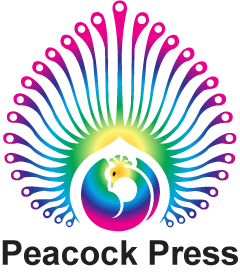
Here you'll find answers to common questions our clients ask. Start by selecting one of the links below. If you don’t see what you need – call or contact us online.
- At what resolution should I save my photos and graphics?
- How do I go about getting an estimate from you?
- How long does it take for you to complete my order?
- How long will it take to receive my estimate?
- Is white considered a printing color?
- Tips on file format setups
- Tips on how to save your design files
- What do I need to provide for variable data projects?
- What file format should I use when submitting my electronic document for printing?
- What is a "proof"?
- What is coated paper stock?
- What is the Pantone Matching System?
- What is variable data printing?
- What kind of work does our store do?
- Why do the printed colors look different from the colors on my screen?
-
At what resolution should I save my photos and graphics?
Resolution should be set to 300 dpi.
Pictures and graphics pulled from the internet are often low resolution, typically 72 dpi or 96 dpi. Avoid these graphics, as they will appear pixilated and blocky when printed.
Also note that you should save all photos in CMYK mode, not RGB mode when possible. Images saved in RGB mode may not print properly. If you are unable to save your image in CYMK mode, please let us know.
-
Well, since you are here, we would suggest you use our online estimate request form. Otherwise, the best way to ensure that we get all the information necessary to do an accurate quote is to give us a call and talk with one of our customer service representatives.
-
How long does it take for you to complete my order?
We will do our best to give you a time estimate when you submit a job, but the real answer is, 'it depends.'
When we give you an estimated completed date, we will always use working days from receiving your proof approval. We cannot begin work on your project until we receive a completed proof with your ok, because if changes need to be made, we would have to rework everything done to that point. To speed the time of your job, review the proof quickly and carefully and return it to us as soon as possible.
After proof approval, there are other variables such as the materials necessary to complete the project. We stock many different types of papers and inks, but we may have to place an order. When this is the case, it usually takes one to three days to just receive the paper. After we have received materials, we can schedule and begin working on your job.
-
How long will it take to receive my estimate?We try to turn around estimates as quickly as possible - our goal is less than 24 hours. Unfortunately, when we have to rely on vendors to supply prices for materials used on the product, we have to wait for them before we can forward the estimate to you.
If we think the estimate will take longer than one business day, we generally will let you know.
If there are certain products that you regularly order, we are more than happy to put together a price sheet for you.
-
Is white considered a printing color?
Not typically. Because white is the default color of paper, it is simply recognized as the absence of any ink. However, when using colored paper, white ink may be used if any text or graphic requires it.
-
Tips on file format setups
Many layout programs have collecting or packaging functions that will automatically collect your document, fonts, all art including and a report. When possible, it is recommended to use these functions because without any or all of these elements we will be unable to print your postcard.
• Enclose all screen fonts and printer fonts
• Include all placed images
• Make sure your files are set with proper bleed, trim and safety areas.
BLEED: All art trimming off the edge MUST be pulled out 1/8” beyond the trim line
TRIM: This is the guideline where the card will be cut
SAFETY: All art and text within this safety area will assure that nothing will be trimmed off during the cutting process. A 1/4” guide in from the trim should work fine. -
Tips on how to save your design files
Make them print ready and acceptable for us to print.
COREL DRAW:
Saving your Corel Draw file as an Adobe Illustrator EPS
• Embed all Images
• Convert all your text/copy to outline fonts
• Export as Illustrator EPSFREEHAND:
• Embed all Images
• Convert all your text/copy to paths
• Export as Illustrator EPS or PDFPAGEMAKER:
Saving your PageMaker file as an EPS
• Embed all Images
• Convert all your text/copy to outline fonts
• Export your file as an EPS using the below settings:
Postscript Level 2
CMYK Mode
TIFF format and
BinaryPUBLISHER:
You will need to have the full version of Adobe Acrobat PDF. If you don’t please download and use our Adobe Job Ready Program. If you do have the full version of Adobe Acrobat PDF please follow the steps below.
Under File, Print, select Adobe PDF writer
Under Properties select Press Quality and Save your PDF -
What do I need to provide for variable data projects?
We work with many types of data files, but CSV files are the safest bet. These are data files that have commas separating each field, and returns separating each line of data. To save time and hassle, make sure your data is properly formatted with each piece of data in separate fields.
Complex projects may require other files, like image files or additional data files. If you are unsure of what may be required for a particular variable project, give us a call for a free consultation.
-
What file format should I use when submitting my electronic document for printing?
PDF (Portable Document Format) is the most common and preferred file format for submitting digital documents. With the installation of a PDF print driver on your computer, virtually any program can generate a PDF file suitable for printing. Both commercial and free PDF print drivers are available online for download from different sources.
-
What is a "proof"?
A proof is a way of ensuring that our systems have interpreted your artwork correctly. Proofs are typically completed either via electronic file (usually a PDF) or hardcopy printout - whichever is most appropriate for the project.
-
What is coated paper stock?
Coated paper stock is a premium, high-quality paper that has been given a smooth glossy finish designed specifically for documents that require sharp details and vivid colors. Uncoated paper, by contrast, is relatively inexpensive but porous, and is best suited to the printing of black and white text documents.
-
What is the Pantone Matching System?
The Pantone Matching System (PMS) is a color reproduction standard in which colors all across the spectrum are each identified by a unique, independent number. The use of PMS allows us to precisely match colors and maintain color consistency throughout the printing process.
-
What is variable data printing?
Variable data printing is technology for printing documents so that each piece is personalized to the specific recipient. At the most basic level, this means personalizing a name and address. But for real impact, many projects include unique graphics and content that speaks directly to the recipient.
-
What kind of work does our store do?
Printing Services - From one-color to full-color printing, our store has the capability to meet your needs. From short run to long run, we can offer a solution that will be just right for you.
Finishing Services - We can cut, perforate, score, number, fold, collate, saddle stitch, bind, and just about any other bindery process you could ever need.
Pre Press Services - We utilize the latest design technology available in order to offer a full range of design services. If you need a brochure produced, we can work from your camera ready copy or use the files you provide on disk.
-
Why do the printed colors look different from the colors on my screen?
In short, printers and monitors produce colors in different ways.
Monitors use the RGB (red, green, blue) color model, which usually supports a wider spectrum of colors. Printers use the CMYK (cyan, magenta, yellow, black) color model, which can reproduce most—but not all—of the colors in the RGB color model. Depending on the equipment used, CMYK generally matches 85–90% of the colors in the RGB model.
When a color is selected from the RGB model that is out of the range of the CMYK model, the application chooses what it thinks is the closest color that will match. Programs like Adobe Photoshop will allow you to choose which color will be replaced. Others may not.
